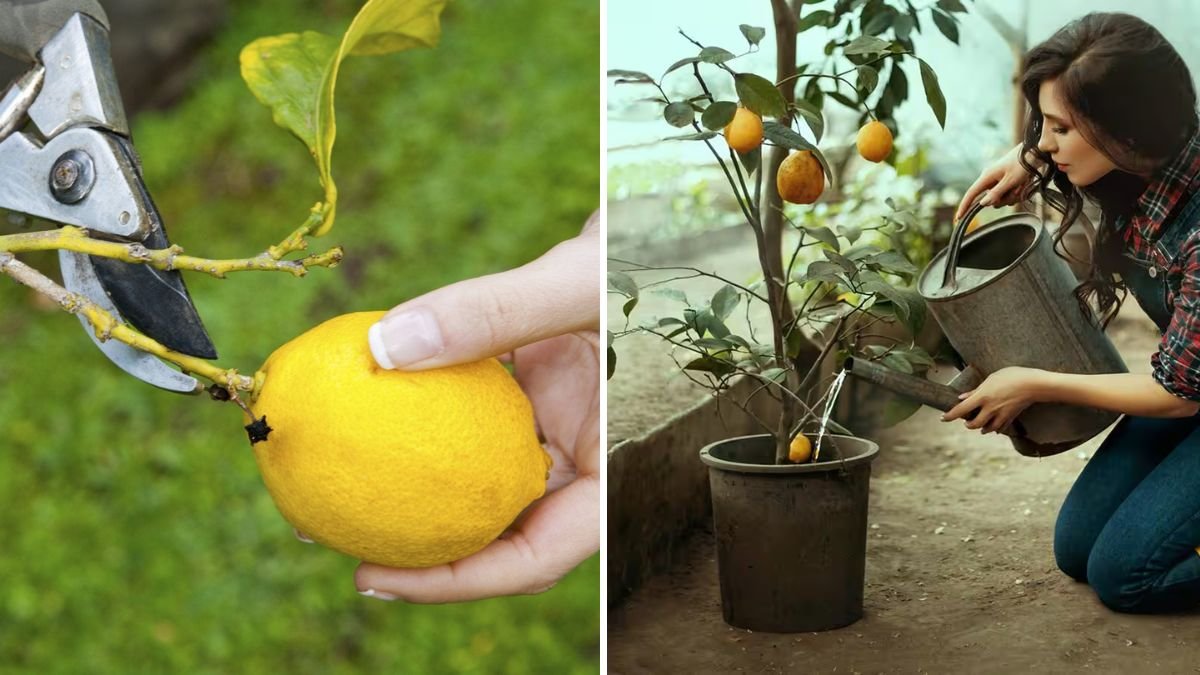Lemon trees (Citrus limon) are one of the most rewarding fruit trees to grow at home. Their vibrant green foliage, fragrant blossoms, and tangy fruits make them a favorite for gardeners. Growing lemon trees in pots is particularly appealing for urban gardeners, balcony growers, or those with limited outdoor space. Potted lemon trees not only add aesthetic value to your home but also allow you to control soil conditions, sunlight exposure, and watering more efficiently.
Caring for lemon trees in pots requires attention to their unique needs, from selecting the right variety and container to ensuring proper nutrition, pruning, and pest management. This guide provides a comprehensive 7-step approach to help you grow healthy, fruitful lemon trees in pots.
Step 1: Selecting the Right Lemon Variety

The first step in successful pot cultivation is choosing a lemon variety suited for container growth.
- Dwarf Varieties:
- Varieties like ‘Improved Meyer,’ ‘Ponderosa,’ and ‘Lisbon’ are ideal for pots because they remain compact while producing abundant fruit.
- Fruit Characteristics:
- Consider the size, flavor, and seed content of the lemon variety. Meyer lemons are sweeter and less acidic, while Lisbon lemons have a classic tart flavor.
- Growth Habit:
- Dwarf varieties are preferred for indoor or balcony gardening due to their smaller size and manageable root system.
- Climate Compatibility:
- Choose varieties that can thrive in your local climate or adapt well to indoor conditions.
Selecting the right variety ensures easier maintenance, optimal fruit production, and healthy growth in a limited space.
Step 2: Choosing the Right Container
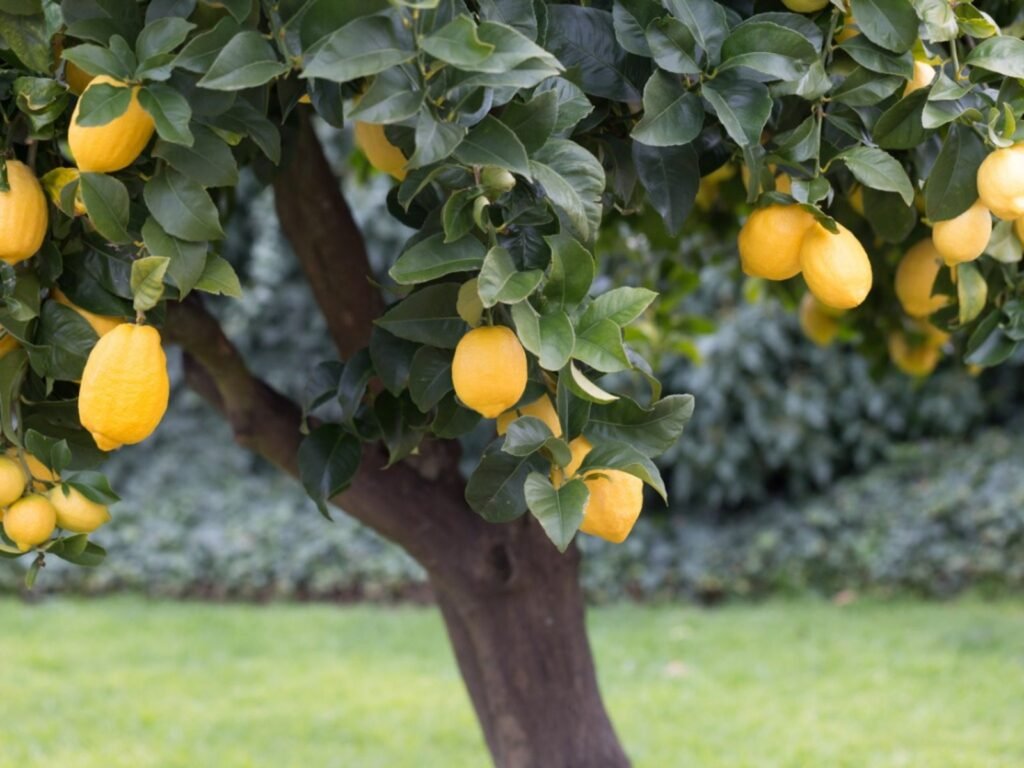
Pot size, material, and drainage are critical for lemon tree health.
- Pot Size:
- Start with a 10–12 inch diameter pot for young trees, and upgrade to 18–24 inches as the tree grows.
- Material:
- Terracotta pots allow good airflow but dry out quickly, while plastic pots retain moisture longer. Choose based on your watering habits.
- Drainage:
- Ensure the pot has multiple drainage holes to prevent waterlogging and root rot.
- Mobility:
- Use pots with wheels or lightweight materials for easy relocation to catch sunlight or protect from extreme weather.
A suitable container promotes healthy root development and prevents common pot-related problems like overwatering and root crowding.
Step 3: Preparing Soil and Planting
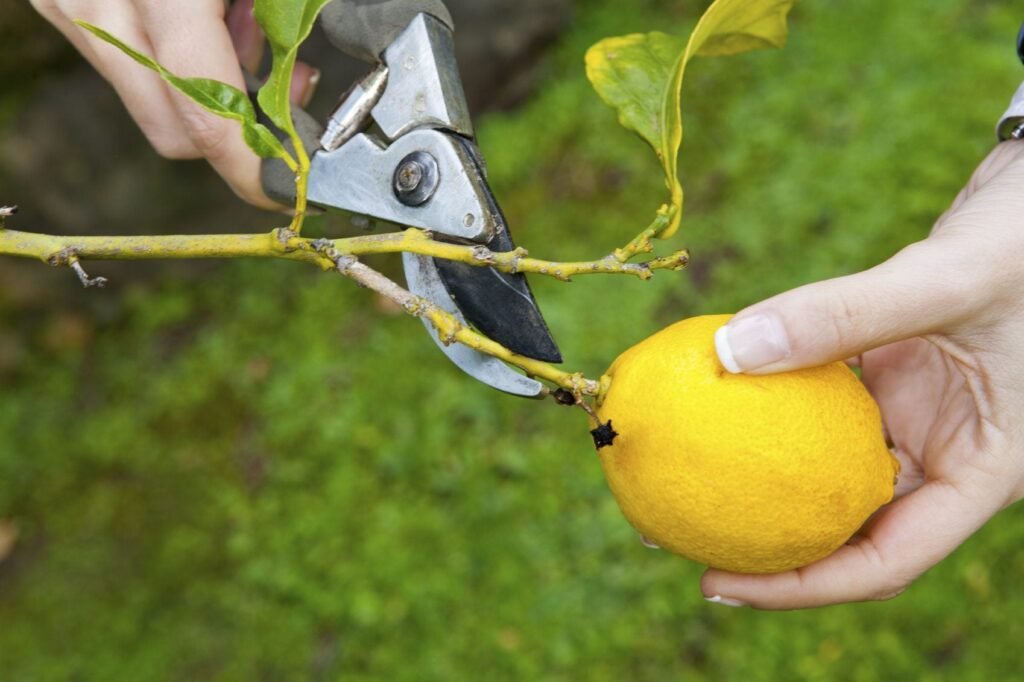
Lemon trees require nutrient-rich, well-draining soil to thrive in pots.
- Soil Composition:
- Use a mix of high-quality potting soil, sand, and compost in a ratio of 2:1:1.
- Ensure slightly acidic soil with a pH between 5.5 and 6.5.
- Planting Technique:
- Gently remove the tree from its nursery container, loosening tangled roots.
- Place the tree in the pot so that the root crown is just above the soil surface.
- Fill the pot with soil mix and press gently to eliminate air pockets.
- Initial Watering:
- Water thoroughly after planting to settle the soil. Avoid waterlogging, which can damage young roots.
Proper soil preparation and planting technique provide a strong foundation for healthy growth and abundant fruit production.
Step 4: Watering and Fertilization
Maintaining consistent moisture and nutrition is crucial for lemon trees in pots.
- Watering:
- Water deeply when the top 1–2 inches of soil are dry.
- Avoid letting the soil completely dry out, but also prevent standing water.
- Adjust watering frequency depending on season and pot size.
- Fertilization:
- Use a balanced, slow-release organic fertilizer formulated for citrus trees.
- Apply fertilizer every 6–8 weeks during the growing season.
- Supplement with compost tea or liquid organic fertilizer to encourage flowering and fruiting.
- Nutrient Considerations:
- Citrus trees require nitrogen, phosphorus, potassium, magnesium, and trace elements like iron and zinc.
- Foliar sprays of micronutrients can prevent deficiencies and improve leaf color.
Consistent watering and proper fertilization ensure strong growth, healthy foliage, and regular fruiting.
Step 5: Sunlight and Temperature Requirements
Lemon trees are sun-loving plants that thrive under warm conditions.
- Sunlight:
- Ensure 6–8 hours of direct sunlight daily. Place pots near south-facing windows indoors or on sunny balconies outdoors.
- Temperature:
- Ideal daytime temperatures range between 70–85°F (21–29°C), and nighttime temperatures should not drop below 50°F (10°C).
- Protect trees from frost by bringing pots indoors or covering them during cold spells.
- Indoor Light Supplements:
- If natural light is insufficient, use full-spectrum LED grow lights to maintain healthy growth.
Providing adequate sunlight and optimal temperatures promotes photosynthesis, flowering, and fruit production.
Step 6: Pruning and Training
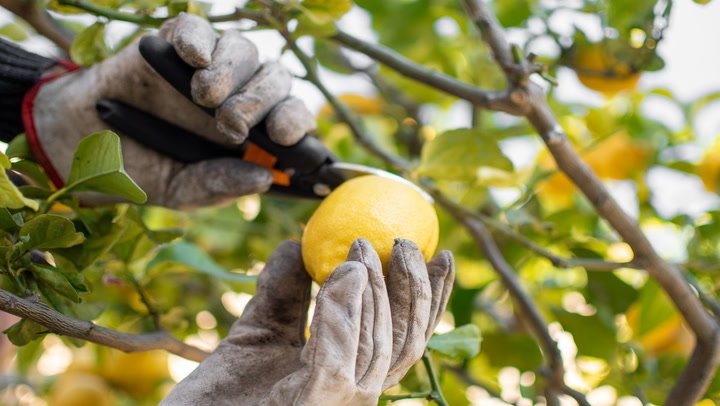
Pruning helps shape the tree, improve air circulation, and encourage higher fruit yield.
- Initial Pruning:
- Remove weak, damaged, or crossing branches in the first year to promote a strong framework.
- Maintenance Pruning:
- Trim excess growth, suckers, and water sprouts annually to maintain tree shape.
- Flowering and Fruit Management:
- Light pruning of dense foliage allows sunlight to reach developing fruits, enhancing size and flavor.
- Training Techniques:
- Use stakes or supports to help young trees maintain an upright structure.
Regular pruning not only enhances the tree’s appearance but also ensures better air circulation, reducing the risk of disease.
Step 7: Pest and Disease Management
Lemon trees in pots are susceptible to pests and diseases if conditions are not managed properly.
- Common Pests:
- Aphids, spider mites, whiteflies, and scale insects.
- Control with neem oil, insecticidal soap, or organic predators like ladybugs.
- Fungal Diseases:
- Powdery mildew and root rot can occur due to overwatering or poor airflow.
- Ensure proper drainage, prune dense foliage, and avoid wetting leaves.
- Regular Monitoring:
- Inspect leaves, stems, and soil regularly for early signs of infestation or disease.
- Isolate affected plants to prevent spreading.
- Organic Practices:
- Use natural remedies and organic sprays instead of chemical pesticides to maintain safe, chemical-free fruits.
Proactive pest and disease management ensures healthy trees and a bountiful harvest.
Additional Tips for Thriving Potted Lemon Trees
- Repotting:
- Repot every 2–3 years to refresh soil and accommodate growing roots.
- Pollination:
- Hand-pollinate indoor flowers using a soft brush to transfer pollen for better fruit set.
- Mulching:
- Add organic mulch on top of the soil to conserve moisture and regulate soil temperature.
- Seasonal Care:
- Reduce watering during dormancy in winter and increase sunlight exposure during flowering.
Following these tips enhances tree health, improves fruit yield, and ensures longevity of potted lemon trees.
Benefits of Growing Lemon Trees in Pots
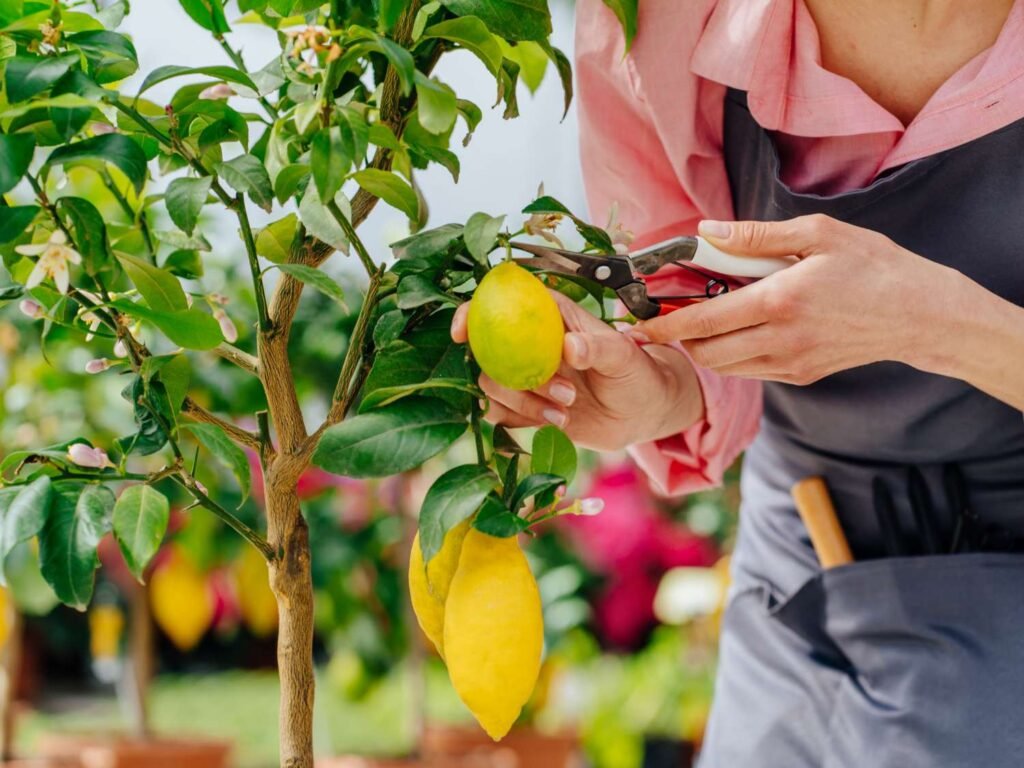
- Space Efficiency: Ideal for balconies, patios, and urban gardens.
- Aesthetic Appeal: Adds greenery, fragrance, and a decorative element to indoor or outdoor spaces.
- Fresh Produce: Provides year-round access to fresh lemons for cooking, beverages, and health remedies.
- Control Over Growing Conditions: Soil, water, and sunlight can be optimized easily in pots.
- Educational and Therapeutic: Offers hands-on experience in gardening and a relaxing hobby.
Potted lemon trees combine functionality, beauty, and practicality, making them an excellent addition to any home garden.
Conclusion
Caring for lemon trees in pots is a rewarding and enjoyable gardening venture. By following this 7-step guide—selecting the right variety, choosing an appropriate container, preparing soil, ensuring proper watering and fertilization, providing adequate sunlight, pruning effectively, and managing pests and diseases—you can cultivate healthy, productive lemon trees in limited spaces.
Potted lemon trees not only provide fresh, flavorful fruits but also enhance the visual and aromatic appeal of your home. With patience, consistency, and proper care, anyone can enjoy the benefits of growing lemon trees in pots, combining sustainability, health, and gardening satisfaction in one project.
Whether you are a beginner or an experienced gardener, these steps ensure that your potted lemon trees thrive and produce bountiful, tangy fruits for years to come.
